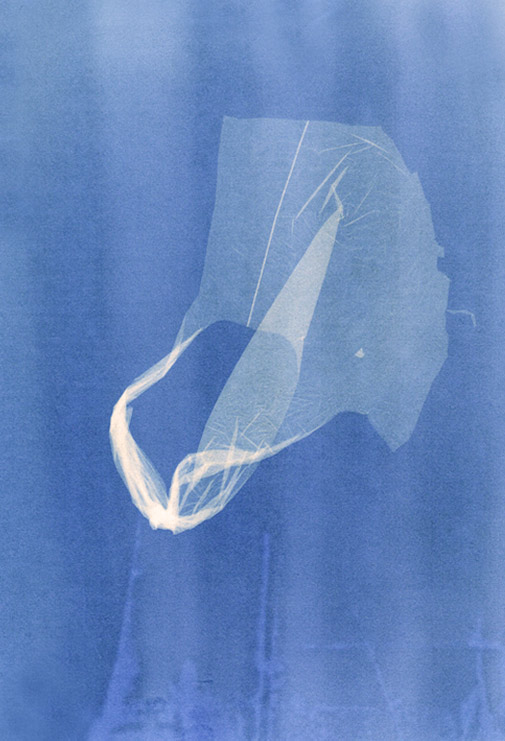Uses of tissue paper
Tissue paper is perfect for making collages, creating epidermis junctions of past, present and future, forming unexpected layers and transparencies, seen and unseen elements. It can be folded, torn, sliced with a Stanley knife, twisted into curves, or angled into straight lines. The best adhesive product to use is spray glue from a can, but you must be careful, it creates toxic fumes. I often forget to open the window. Tissue paper can be overlaid, and conceals yesterday, but reveals the promising ridge of a tomorrow. If you take an old paintbrush, you can cover the paper in a film made from strokes of white glue (the kind of glue that dries transparent), and the paper will be rendered like an Orthodox relic, given an egg-white Byzantine shine. However, tissue paper is a delicate matter, thin as a newly-rolled pastry, if you pull too hard it rips, and you are left with a frightening hole, complete with an uncomfortable, shrivelled edge. It is lovely to take a whole sheet and roll it into a neat ball, a paper egg light in the palm of your hand. Afterwards, you can unroll the paper, and it will resemble an autumn leaf, or an old woman’s hand, clutched at a dusky bedside in the last days of life. Tissue paper can also serve for packing a baby’s layette, neat, shrunken woollen garments, hope bound tightly in white. Or, tissue paper could cover and enclose things for what they used to call the “bottom drawer”, a collection composed for the day a woman got married, and made a new home. Fresh tablecloths and napkins to coat in crumbs, or sheets to roll in in a sweat entwined tangle, bedding to bloody and to soil, to wash and render perfect. Tissue paper is like skin, or a gentle fog, a sea mist. If you stick it over a photo you can make it blurred, opaque, with a subtle vintage touch. Finally, you can also use tissue paper to wrap a present, to cover a trinket, a book, a bijou or a picture frame. The receiver can rip the paper into shreds. It can be the outer coating of a gift, a pathway to open.

